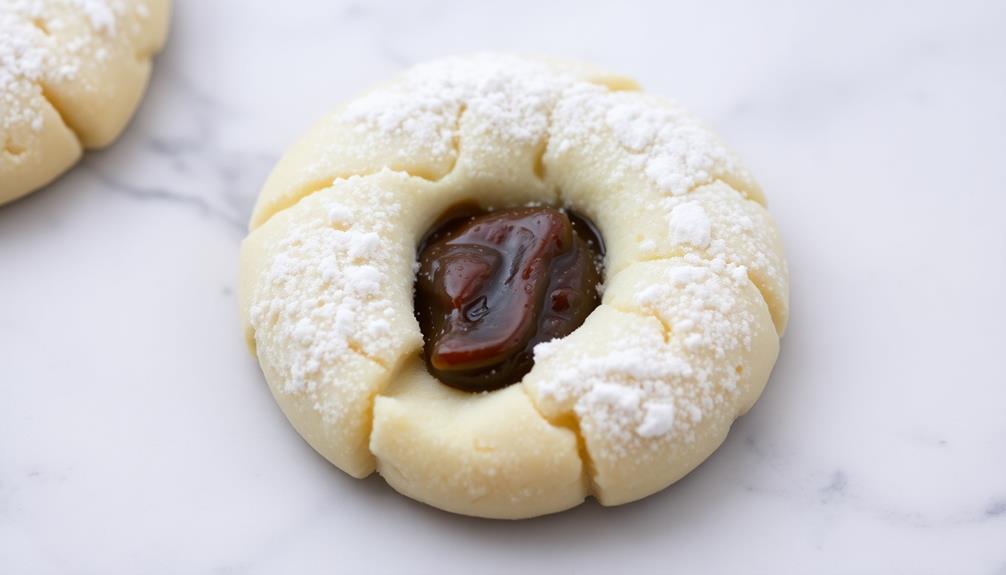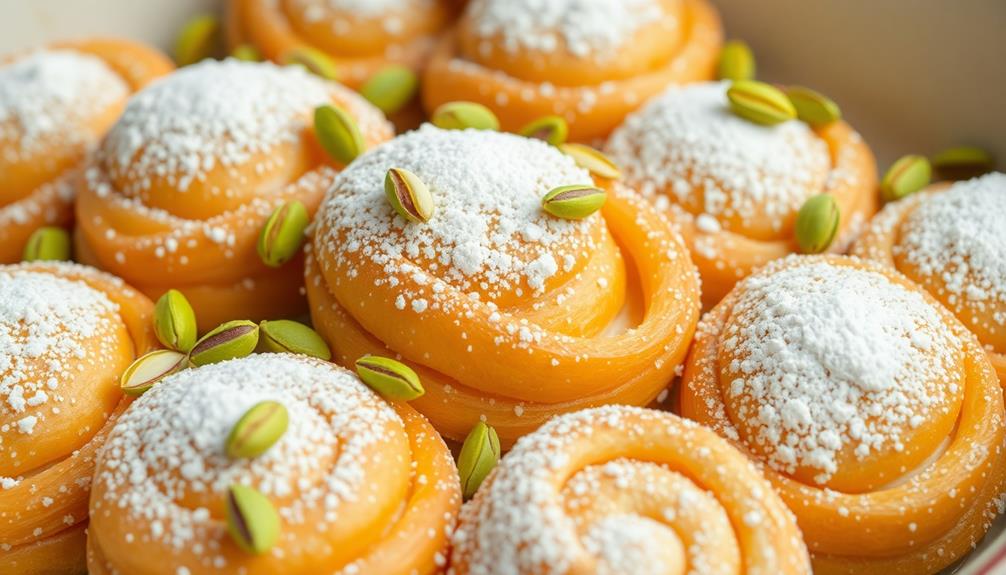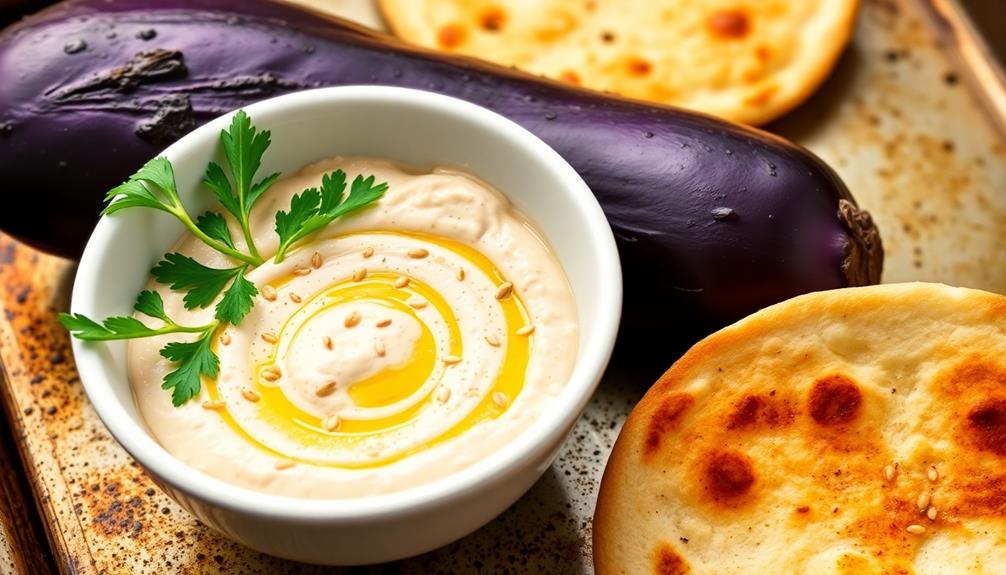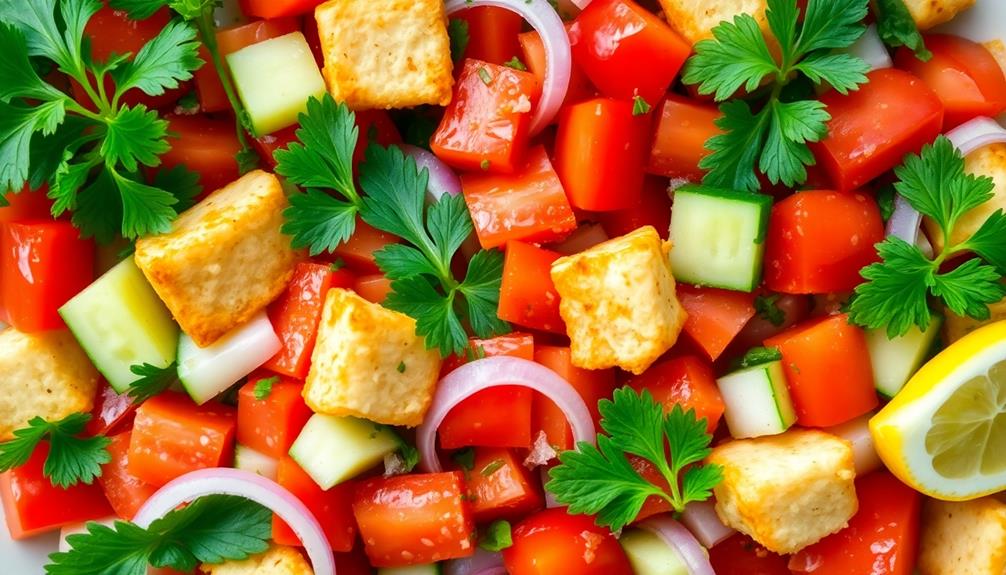Maamoul are delightful Middle Eastern cookies with a rich history. These shortbread treats feature a tender dough wrapped around a sweet date-based filling. You'll first knead the dough until it's smooth and pliable, then shape it into small balls. Next, you'll carefully fill each ball with date paste and seal it up. After baking until lightly golden, you'll dust the maamoul with powdered sugar for a beautiful, snowy finish. These beloved cookies symbolize cherished cultural traditions and family gatherings, and you'll discover there's more to explore about these delectable delights.
Key Takeaways
- Maamoul are traditional Middle Eastern shortbread cookies with a rich history, often filled with date paste and known for their intricate handmade designs.
- The cooking process involves kneading a smooth dough, shaping it into balls, filling with date paste, and baking until lightly golden.
- The dough is carefully kneaded to develop gluten for a tender yet sturdy cookie structure, then shaped into balls with thumb indentations for the filling.
- Maamoul are typically baked at 350°F (175°C) for 12-15 minutes, and then dusted with powdered sugar for a visually appealing and flavorful finish.
- Maamoul cookies are a cherished cultural tradition, symbolizing family gatherings and providing a harmonious balance of tender dough and sweet date filling.
History
Maamoul, the beloved Middle Eastern shortbread cookies, have a rich history that dates back centuries.
These delectable treats were first mentioned in ancient texts from the region, with records indicating their popularity among the ruling classes and nobility. Over time, the recipes and techniques for making maamoul evolved, reflecting the diverse cultural influences of the Middle East.
The name "maamoul" is derived from the Arabic word for "filled," a nod to the signature stuffing of dates, nuts, or other sweet fillings that's encased in the crumbly, buttery dough. Maamoul is a beloved Middle Eastern treat that is often enjoyed during religious holidays and special occasions. The delicate, intricate patterns on the surface of maamoul are traditionally made by pressing the dough into wooden molds, resulting in beautiful, decorative shapes. In addition to sweet fillings, maamoul can also be stuffed with savory ingredients, such as in the traditional stuffed eggplant recipe.
Traditionally, maamoul were made by hand, with skilled bakers meticulously shaping each cookie into intricate designs and patterns. The act of baking maamoul became a cherished tradition, often passed down through generations of families.
Today, maamoul remain a beloved part of Middle Eastern cuisine, served during special occasions and holidays, and enjoyed by people around the world.
Their rich history and timeless flavors continue to captivate and delight those who indulge in these delightful cookies.
Cooking Steps
The preparation begins by gathering the necessary ingredients and tools. You'll need a large bowl, a rolling pin, a baking sheet, and a pastry brush. Preheat your oven to 375°F (190°C).
In the bowl, mix the flour, semolina, and salt until well combined. Then, add the butter and work it into the dry ingredients using your fingertips until the mixture resembles coarse crumbs.
Next, slowly pour in the water, a little at a time, and knead the dough until it forms a smooth, pliable ball. Cover the dough and let it rest for 30 minutes.
Once rested, divide the dough into small, equal-sized pieces. Using the rolling pin, gently roll each piece into a round disk, about 1/4 inch thick. Place a teaspoon of filling in the center of each disk, then fold the dough over to form a half-moon shape. Crimp the edges with a fork to seal.
Carefully transfer the filled cookies to the baking sheet. Brush the tops with the egg wash. Bake for 15-20 minutes, or until lightly golden. Allow the cookies to cool before serving.
Step 1. Knead Dough Until Smooth and Pliable
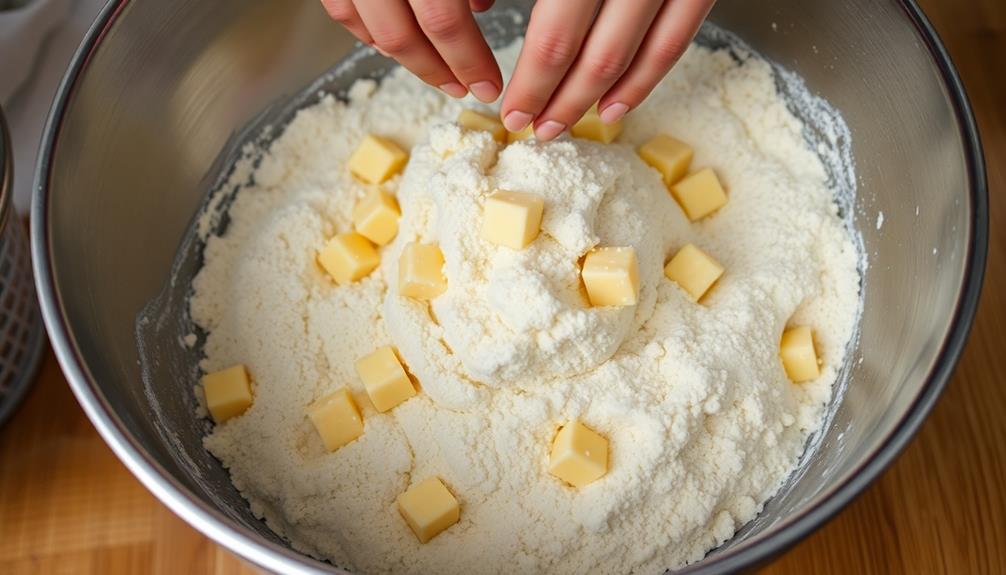
After assembling the ingredients, knead the dough until it becomes smooth and pliable. This is an important step that transforms the dough into a soft, workable texture.
Start by lightly flouring your work surface. Then, place the dough on the surface and use the heel of your hand to push and fold the dough over itself. Continue kneading for about 5 minutes, or until the dough feels silky and elastic.
If the dough seems too sticky, add a sprinkle of flour. Conversely, if it's too dry, mist it lightly with water. The goal is to achieve a smooth, uniform consistency that's easy to roll and shape.
Kneading develops the gluten in the flour, giving the cookies their tender yet sturdy structure. Once the dough is ready, you can begin shaping the maamoul.
Carefully roll small portions into balls or crescents, then fill them with the sweet date paste. After that, you're well on your way to baking delicious homemade maamoul cookies!
Step 2. Form Dough Into Small Balls
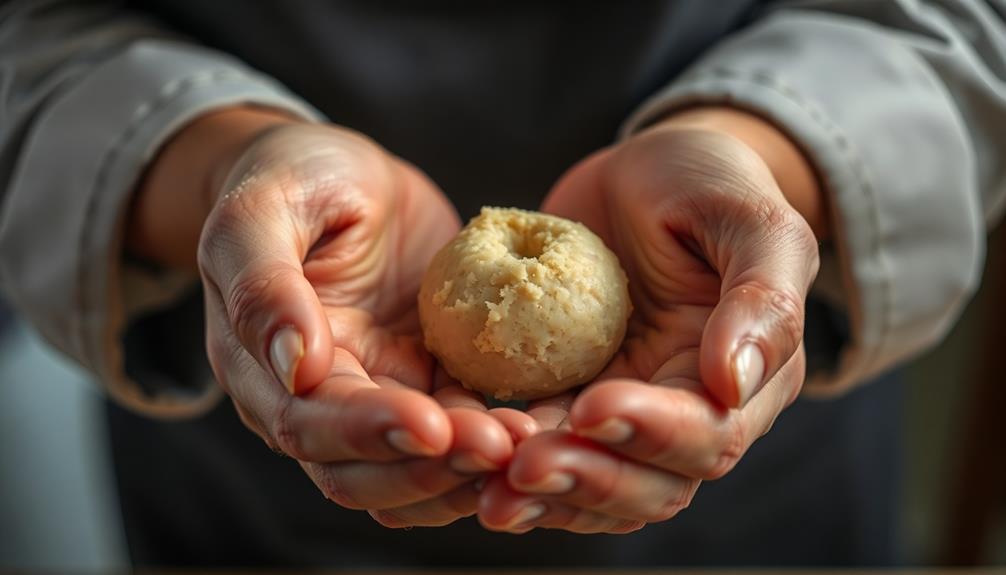
Once the dough has been kneaded to a smooth and pliable consistency, you can begin shaping the maamoul. Grab a small piece of dough, about the size of a walnut, and roll it into a smooth ball between your palms.
Don't worry if they're not perfect – the irregular shapes add to the charm of homemade maamoul. As you work, keep the remaining dough covered to prevent it from drying out.
Once you've formed all the dough into balls, it's time to flatten them. Using your thumb, gently press down on each ball to create a small indentation in the center.
Be careful not to press too hard, or the dough may crack. If the dough sticks to your thumb, lightly dust it with flour.
Continuing this process, you'll end up with a tray of beautifully shaped maamoul, ready to be filled and baked.
Step 3. Fill Centers With Date Paste
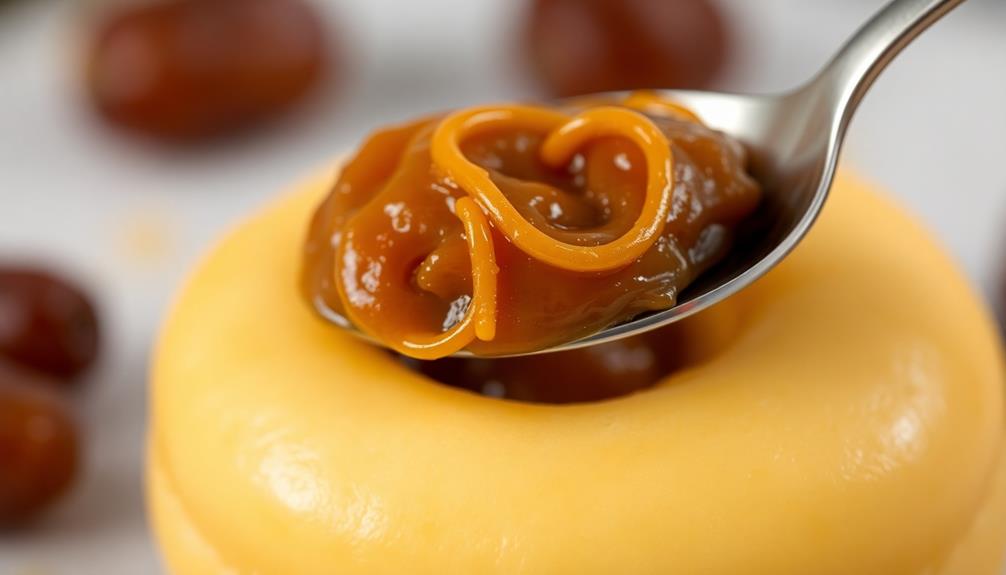
Next, generously fill the indentation in each maamoul dough ball with a teaspoon of date paste.
Carefully scoop a small amount of the sweet, sticky date filling and place it right in the center of each round dough piece. Gently press the paste down to make sure it's secure and won't ooze out during baking. This decadent date filling is the star of the show, so you'll want to make sure each cookie has a nice, generous amount.
Once the centers are filled, it's time to seal them up. Carefully pinch the dough around the filling, sealing it in completely. You want to make sure there are no gaps or cracks where the date paste can escape.
Pinch and roll the dough between your palms to shape each maamoul into a smooth, uniform ball. Repeat this process with all the dough balls until they're ready for baking.
Get ready for the mouthwatering aroma of these delightful date-filled cookies to fill your kitchen!
Step 4. Bake Until Lightly Golden
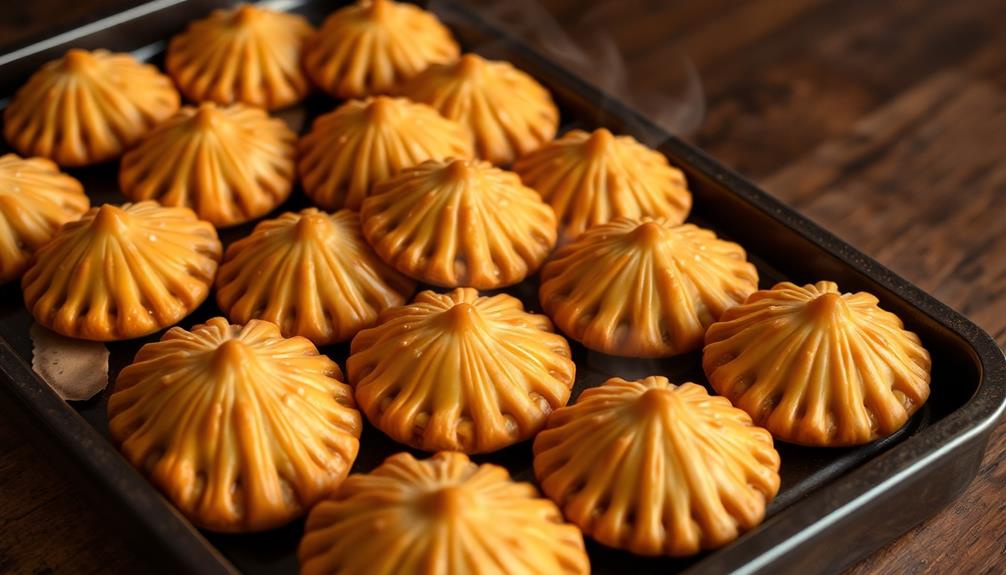
Preheat your oven to 350°F (175°C). Line a baking sheet with parchment paper.
Gently place the filled maamoul dough balls onto the prepared sheet, spacing them about 2 inches apart. This will allow the cookies to bake evenly and prevent them from spreading too much.
Now, pop the tray into the preheated oven. Bake the maamoul for 12 to 15 minutes, or until they're lightly golden on top. Keep an eye on them, as ovens can vary.
You'll know they're ready when the cookies have a delicate, crisp exterior but are still soft and tender inside.
Once baked, remove the maamoul from the oven and let them cool on the baking sheet for 5 minutes. This resting period will help the cookies set and the filling to firm up slightly.
Step 5. Cool With Powdered Sugar
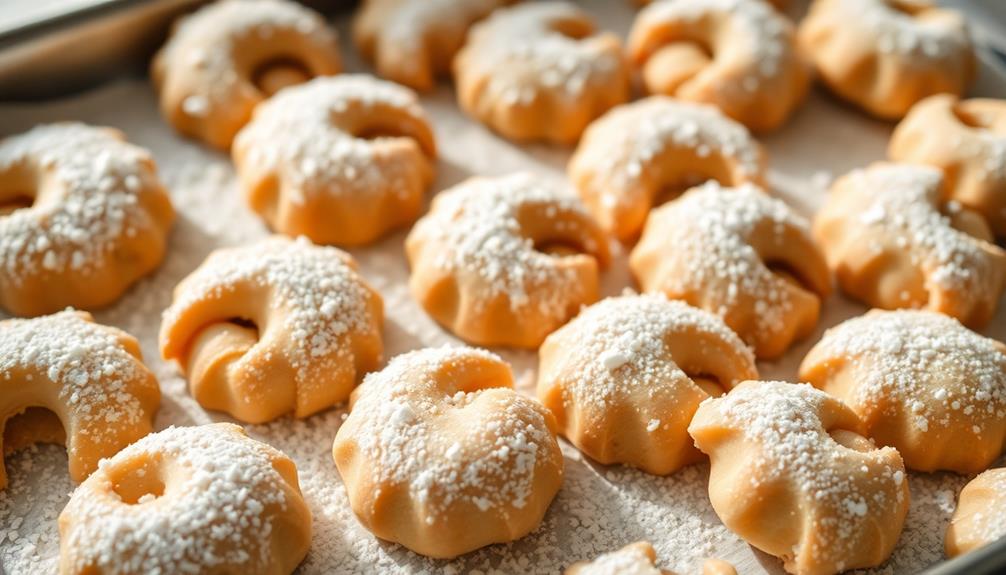
After the maamoul have cooled completely, it's time to dust them with powdered sugar. This is the final step in creating these delightful, traditional Middle Eastern cookies.
Grab a fine-mesh sieve and gently sprinkle the powdered sugar over the top of the cookies. Make sure to cover them evenly, creating a beautiful, snowy white coating. The sweet, powdery sugar will melt into the tender, flaky pastry, creating a heavenly flavor.
Once the cookies are dusted, you can transfer them to a serving plate or platter. Arrange them in a pretty pattern, perhaps in neat rows or clustered together.
The maamoul will now be ready to enjoy! Bite into one and savor the contrast of the soft, date-filled center and the crisp, sugar-coated exterior. These cookies are a true delight, perfect for sharing with family and friends.
The powdered sugar adds the final touch, making the maamoul even more irresistible.
Final Thoughts
Maamoul cookies hold a cherished place in the hearts and homes of many. These delectable treats are more than just a dessert – they're a treasured part of cultural traditions and family gatherings. As you savor the final bite, the rush of flavors and memories lingers, leaving you craving for more.
The combination of the tender, buttery dough and the sweet, earthy filling is a harmony that perfectly balances the senses.
While maamoul cookies may seem daunting to make, the joy of crafting them by hand is unparalleled. Each intricate fold and delicate shape is a testament to the care and attention poured into every morsel.
Whether you're sharing them with loved ones or indulging in a quiet moment of solace, these cookies have the power to transport you to a world of warmth and nostalgia.
Embrace the ritual, savor the flavors, and let the maamoul cookies become a cherished part of your culinary journey.
Frequently Asked Questions
What Is the Best Flour to Use for Making Maamoul?
When making delectable maamoul, the best flour to use is all-purpose flour. This versatile flour produces a light, tender cookie with just the right amount of chew.
The all-purpose blend gives the dough the perfect texture to hold its shape during baking. Plus, it's easy to find and affordable, making it a great choice for your homemade maamoul.
Get ready to enjoy these tasty treats with the perfect flour!
Can I Substitute Dates With Other Fillings?
You bet! Maamoul is so versatile, you can experiment with all sorts of fillings.
Instead of dates, try using nuts like walnuts or pistachios, or sweet jams like apricot or raspberry. The possibilities are endless!
Just be sure to chop or puree the filling so it's easy to work with. Have fun getting creative and discovering your new favorite maamoul flavor.
The best part is sharing them with friends and family.
How Long Do Maamoul Cookies Stay Fresh?
How long do these tasty cookies stay fresh? Well, you're in luck!
Maamoul cookies can stay fresh for up to a week when stored properly. Keep them in an airtight container at room temperature, and they'll stay soft and delicious.
You can even pop them in the freezer for up to 3 months. Just be sure to thaw them before enjoying!
With proper storage, you can savor these yummy treats for days.
Can I Freeze Maamoul Dough for Later Use?
Yes, you can definitely freeze the maamoul dough for later use!
In fact, this is a great way to save time and have delicious homemade cookies ready whenever you crave them.
Simply prepare the dough, shape it into balls, and pop them in the freezer.
When you're ready to bake, just thaw the dough in the fridge overnight, and you're good to go!
It's a handy trick that'll make your life so much easier.
What Are Some Common Serving Suggestions for Maamoul?
When serving up these delightful treats, you've got lots of options! You can enjoy them on their own as a sweet snack, or pair them with a steaming cup of tea or coffee for a cozy afternoon pick-me-up.
They also make a lovely addition to a dessert spread, where their rich flavors can shine.
And don't forget, maamoul are perfect for sharing with family and friends, so bring them along to your next celebration!
